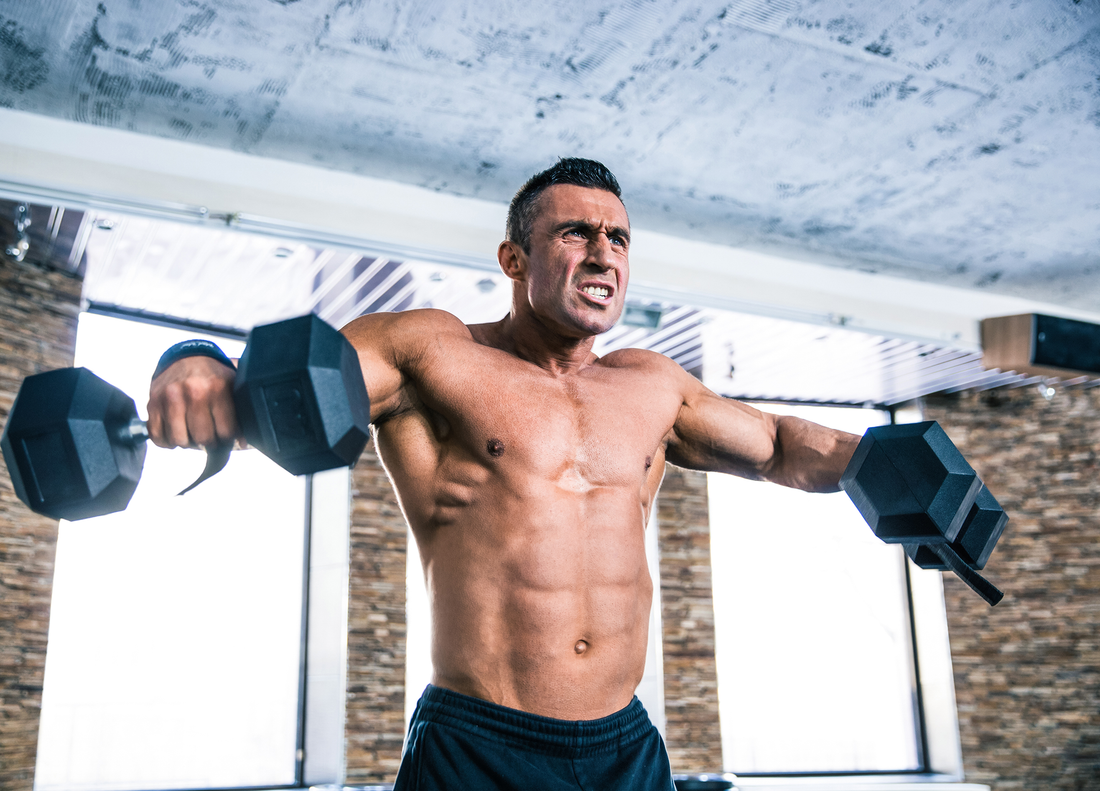When it comes to training with weights, there are only two kinds of exercises. There are the movements we tolerate, and the exercises we love. Some people absolutely love bench pressing. The ever-present measure of how strong a man is, for all to see! Lot of people love biceps curls, because, well, lots of people just plain love hitting biceps! Others worship the deadlift, as it is simply man against gravity. You’re just pulling cold, hard steel against the forces discussed by Sir Isaac Newton, and when you move that weight, you’ve conquered the universe!
Then, there are the exercises we hate. These are the ones which, for one reason or another, we only perform out of some innate obligation to build a complete and symmetrical physique. These movements don’t let us use a lot of weight, limiting any ego boost. They don’t show off any major muscle groups, killing our mirror motivation Monday. Or maybe they just hurt like heck, which none of really enjoy. Whatever the reason, these lifts are something we don’t enjoy, but we have to perform. Shoulder lateral raises are definitely one of these movements!
Shoulder lateral raises don’t have to be boring. They can actually be some of the most creative and challenging lifts you will encounter in the gym, if you are willing to mix things up and apply a few creative strategies. Ready to give a few variations a shot?
Cables, dumbbells and kettlebells, oh my!
Lateral raises target the shoulder muscles by forcing your body to gradually raise a weight which is pulling against a certain angled resistance. However, the kind of exercise you are using will have a direct effect upon the angle of resistance you are facing. Sticking with straight dumbbells, you are pulling against the direct force of gravity, toward the floor at all times. If you’re using cables, however, then you are pulling against a fixed stationed weight whose pulling angle changes as you move the weight. Kettlebells, with their fixed handle and weights that pull downward, offer even another varied angle. Additionally, the level of continued resistance varies for each movement as well. Training with all three variations for your lateral raises will ensure your muscle fibers are hit with nice mix of training angles and degrees!

Mix up your holds & reps
This approach would echo the old “21s” which you may have performed on cable crossovers, changing up foot position every seven reps to hit the chest form new angles. In these variations, you will change up your lateral arise angle of lifting (front, side, and 45 degree angle) every seven repetitions. You’ll complete seven side lateral raises, then immediately complete several front lateral raises, then immediately complete seven lateral raises at 45 degrees. Or, you can mix up the left/right approaches as well, using one arm for 7 reps, then the other arm, until you’ve completed all angles. Get creative with it!
Varying rep schemes
Most of the time, trainers will utilize a higher repetition scheme for their lateral raises. This movement can put the shoulders in a bit of a precarious position, and any kind of “Body English” or otherwise sloppy form can lead to injury. Most of the time, the rep scheme of 10 to 12 repetitions is used, which delivers stimulation to a decent mix of slow and fast twitch fibers. However, being the complete, thinking athlete that you are, always looking for an advantage in terms of gains, you wish to stimulate more muscle fibers than the average gym rat would be able to achieve. Warm up properly, keep your form perfect, bump up that weight, complete your normal 2-3 sets of 10-12 repetitions.. and then go heavy for laterals! Keep the reps in the 5 to 8 range with some very focused form, and you’ll hit the fast-twitch, explosive “sprinter” muscle fibers which usually aren’t targeted because you just don’t go that heavy. Then, to wrap things up, lighten the workload and pound out some high rep sets of 12 to 25 repetitions of laterals to isolate and attack those slow-twitch muscle fibers. Complete stimulation of all the muscle fibers is what you need, if the goal is complete deltoid development!

Add Arnold Presses
There used to be a famous bodybuilder in southern California, back in the 1970s, who had some pretty creative ideas when it came to training shoulders. Sure, he had some famous movie star appearances and maybe ran for Governor, but you probably know the famous Arnold Schwarzenegger mostly from his popular shoulder lift known as Arnold Presses, right? Okay, maybe not, but the movement is one that is ideal for hitting those front deltoids when nothing else will do. Complete your standard 10 repetitions of dumbbell lateral raises then immediately flip the weights, press them over your head with palms facing one another, and proceed to knock out ten repetitions of Arnold Presses. Stacking up highly effective shoulder exercises one after another is a terrific way to bring synergy to your training!

Lateral raises are a highly effective exercise which can help to maximize your deltoid development. Done correctly with a lot of patience, good form, and plenty of worth ethic, this exercise can transform the appearance of your shoulders in just a year. Use the aforementioned movements to really mix things up and get the most out of them. Good luck!


